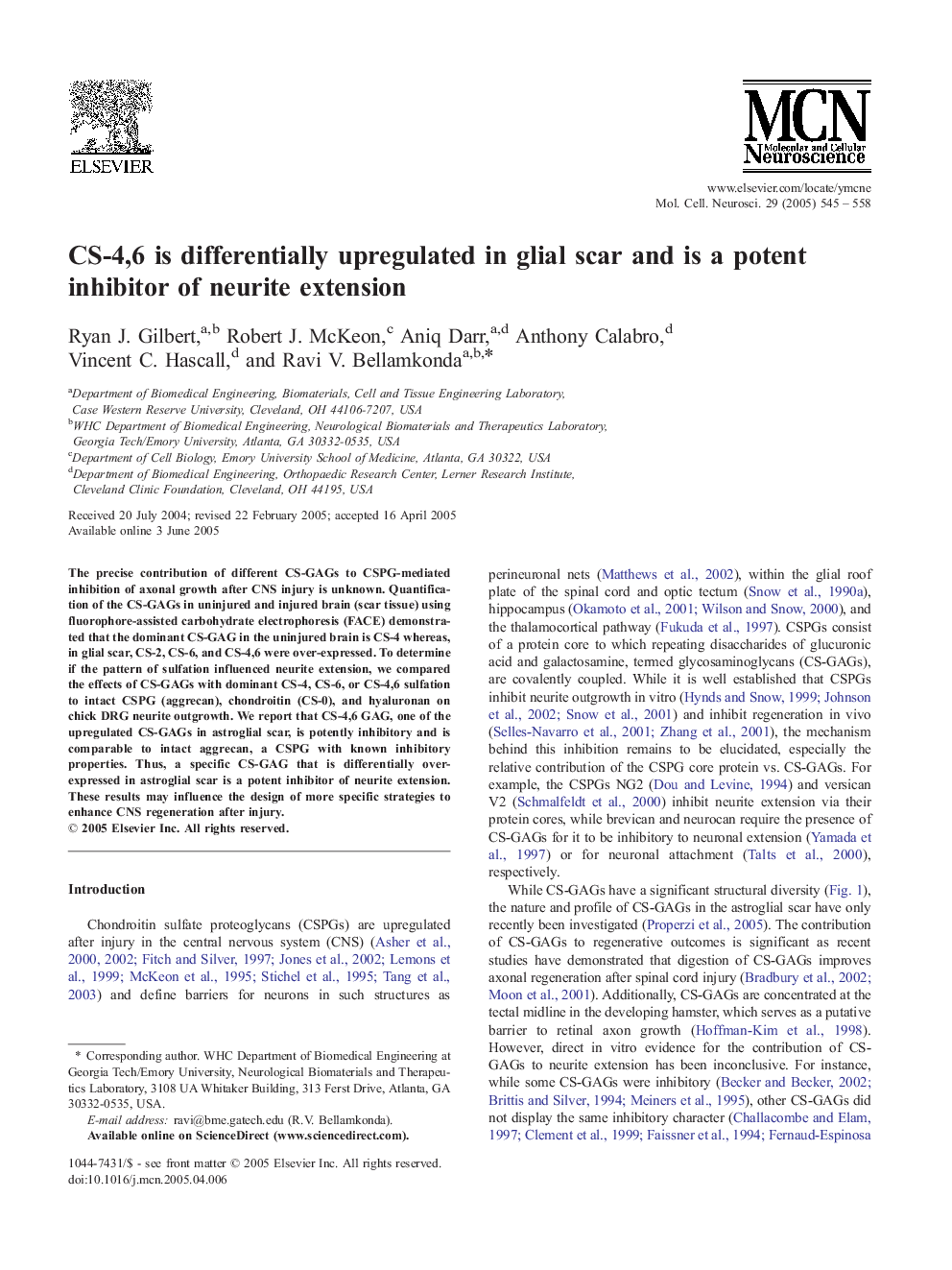| Article ID | Journal | Published Year | Pages | File Type |
|---|---|---|---|---|
| 10956857 | Molecular and Cellular Neuroscience | 2005 | 14 Pages |
Abstract
The precise contribution of different CS-GAGs to CSPG-mediated inhibition of axonal growth after CNS injury is unknown. Quantification of the CS-GAGs in uninjured and injured brain (scar tissue) using fluorophore-assisted carbohydrate electrophoresis (FACE) demonstrated that the dominant CS-GAG in the uninjured brain is CS-4 whereas, in glial scar, CS-2, CS-6, and CS-4,6 were over-expressed. To determine if the pattern of sulfation influenced neurite extension, we compared the effects of CS-GAGs with dominant CS-4, CS-6, or CS-4,6 sulfation to intact CSPG (aggrecan), chondroitin (CS-0), and hyaluronan on chick DRG neurite outgrowth. We report that CS-4,6 GAG, one of the upregulated CS-GAGs in astroglial scar, is potently inhibitory and is comparable to intact aggrecan, a CSPG with known inhibitory properties. Thus, a specific CS-GAG that is differentially over-expressed in astroglial scar is a potent inhibitor of neurite extension. These results may influence the design of more specific strategies to enhance CNS regeneration after injury.
Related Topics
Life Sciences
Biochemistry, Genetics and Molecular Biology
Cell Biology
Authors
Ryan J. Gilbert, Robert J. McKeon, Aniq Darr, Anthony Calabro, Vincent C. Hascall, Ravi V. Bellamkonda,
